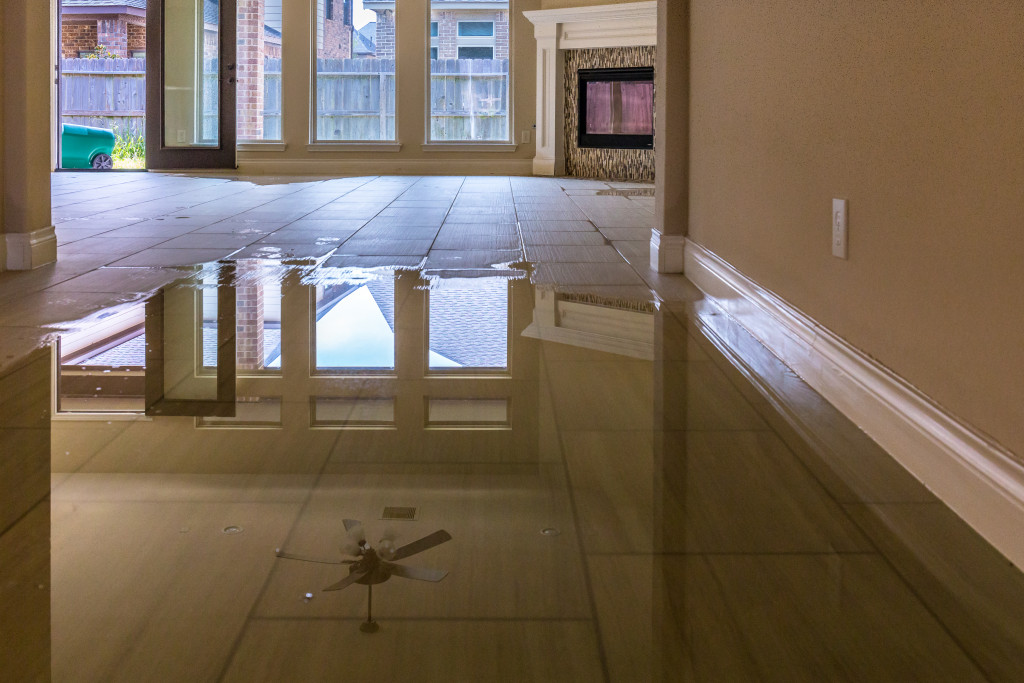- Ensuring the home’s foundation is elevated is of utmost importance in areas prone to flooding.
- Ensure proper drainage by installing backwater valves on drains and regularly maintaining them.
- Waterproofing the basement is essential to prevent water damage during floods.
- Implement proper landscape grading to direct water away from the home.
- Hire a professional emergency water damage restoration company for swift response and efficient repairs in case of flooding.
Flooding can devastate homeowners, but with thoughtful remodeling, you can mitigate damage and ensure your family’s safety. Here are five tips to remodel your home to prevent and manage floods effectively.
1. Elevate Your Home’s Foundation
When remodeling your home, it is crucial to carefully consider elevating your home’s foundation, especially if you reside in a flood-prone area. By raising the house, you can effectively safeguard your property and belongings from potential water damage caused by flooding.
To ensure maximum protection, it is important to ensure the foundation is elevated to a level that can accommodate the worst flooding recorded in your area. This will provide you with an added layer of security and peace of mind during extreme weather events.
Consulting with a qualified engineer or architect is highly recommended to ensure that the elevation process is carried out effectively and meets all the required standards and codes. Their expertise and guidance will help you navigate the process smoothly, ensuring your home is properly elevated and fortified against flood risks. With their assistance, you can proceed confidently, knowing that your home is equipped to withstand potential flooding and protect your investment for years to come.
2. Install Backwater Valves
Consider installing backwater valves on your drains to prevent sewage from flowing back into your house during heavy rainfall or floods. These devices allow water to only flow out from your home, preventing backflow.
Routine maintenance is paramount to ensure these valves’ proper functioning when needed the most. It is crucial to regularly inspect and check them for any debris or buildup that might hinder their operation. By diligently removing any obstructions and keeping them clean, you can guarantee their optimal performance and reliability over an extended period.
3. Waterproof Your Basement
A waterproofed basement is crucial to preventing water damage during floods. This is because most of the water that enters your home during a flood comes from underground, seeping through cracks and gaps in the basement walls.
Here are tips to waterproof your basement:
Invest in a High-quality Dehumidifier

Using a dehumidifier is a powerful weapon in combating excessive moisture. By lowering the humidity levels in your basement, you can effectively thwart the growth of mold and mildew, which thrive in damp environments. This simple yet effective solution helps maintain a clean and healthy indoor space.
Install a French Drain System
A French drain is an incredibly effective method for diverting water away from your home. This trench, lined with gravel or rock and featuring a perforated pipe, effectively diverts excess surface water away from the house, safeguarding its protection.
Enhance Ventilation
Enhancing the ventilation in your basement can greatly contribute to maintaining its dryness. One option to consider is increasing the number of vents or installing an exhaust fan, promoting improved air circulation.
Regular Maintenance and Inspection
Regularly inspect your basement for signs of moisture or cracks. Early detection and repair can save you from costly water damage in the future. Always keep an eye out for damp spots or musty odors, as these could be indications of a moisture problem.
4. Implement Landscape Grading

Proper grading of your landscape can play a vital role in flood prevention. The ground should slope away from your home, directing water away from the foundation. This can be achieved by adding soil to the perimeter of your house and tamping it down to create a slope.
Consider integrating plants and grass into your landscape design to mitigate soil erosion. Deep-rooted vegetation not only aids in absorbing surplus water but also serves as a natural defense against flooding.
5. Hire a Professional
Even with all precautionary measures, floods can still substantially harm your residence. In the aftermath, swift action is crucial to mitigate the lasting impact of water damage.
Having the contact of an emergency water damage restoration company is essential. These professionals can respond promptly, extracting water, drying out your home, and conducting necessary repairs to restore your property. Ensure you choose a company known for its rapid and efficient emergency response.
In Summary
With thoughtful planning and remodeling, you can significantly reduce the risks and damages associated with flooding in your home. Elevating the foundation, installing backwater valves, waterproofing the basement, proper landscape grading, and planning for emergency water damage restoration are all crucial components of a flood-resistant home. These measures protect your property and provide peace of mind, knowing you are prepared for potential flooding events.




